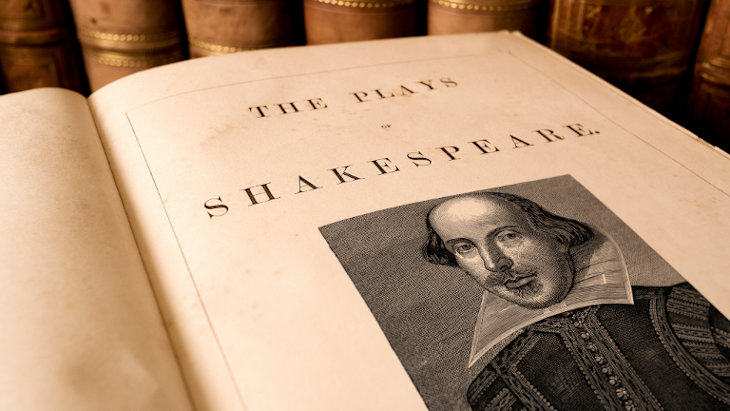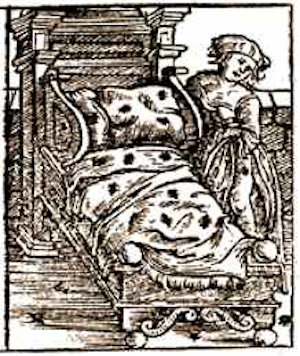 Iran’s Attack on Israel
Iran’s Attack on Israel


7 min read
Some of Shakespeare’s greatest works were written while he was quarantined.
While millions are living under lock-down and quarantine conditions for what might turn out to be many months to come, we can better understand similar circumstances that occurred in a small town in rural England nearly 500 years ago, in 1564 when the Bubonic Plague ravished the countryside.
One young couple, John and Mary, were terrified. They had a three month old son at home and were desperate for him to survive the plague. Previous outbreaks had claimed the lives of their two older children. John and Mary locked their doors and windows, allowing no one to come in or out until the epidemic subsided. It did in time, sparing them and their son. The couple’s surname is well-known to us: Shakespeare. The baby they managed to save was their son William.
William Shakespeare grew up to become the most famous playwright in the English language. Besides his plays and poems, relatively few documents related to Shakespeare’s life survived. But a document from 1592 refers to him as an established writer of popular plays. The following year, an outbreak of Bubonic Plague once again broke out, closing theatres and forcing Shakespeare to explore new outlets for his creativity.
 A bed full of fleas
A bed full of fleas
Instead of plays, Shakespeare wrote two major poems that year, including the classic Venus and Adonis love story in verse. It seems that the terror of the plague was top of Shakespeare’s mind as he wrote it. Love, he explained in the work, was so beautiful and pure that it had the power “to drive infection from the dangerous year!” Love is so powerful “That the star-gazers, having writ on death, May say, the plague is banish’d by thy breath”.
In time Shakespeare returned to writing plays and prospered in London’s burgeoning theater scene. He formed his own acting company and built a popular theater. With Londoners flocking to watch Shakespeare’s plays, in 1599 he and his employees tore down their old theater and used the beams to build the famous Globe Theater in which Shakespeare’s works played to packed audiences on a vast outdoor stage.
Theaters were seen as particularly dangerous spots for the spread of the disease.
The threat of plague was never far away. Bubonic Plague was spread by fleas carried in the fur of rats, though the people of Shakespeare’s days had no understanding of the real cause of the plague. But they did realize that when large groups gathered together the epidemic seemed to spread with even greater speed. Theaters were seen as particularly dangerous spots for the spread of the disease.
In The Shakespearean Stage 1574-1642, Andrew Gurr notes that London officials placed the blame of spreading Bubonic Plague on audiences coming into the city to “see certayne stage plays” which featured “close pestered together in small romes...whereby great infeccion with the plague, or some other infeccious diseases, may rise and growe….” With plague outbreaks common, many London theatres were closed more often than they were open.
After an outbreak of the plague in 1601 claimed the lives of 30,000 Londoners, the King’s Privy Council ordered all theaters shut whenever the number of people dying from plague rose “above the number of 30” in a week. Two years later, an even larger outbreak of plague saw many times that number of deaths.

Shakespeare’s players lowered the flag on the Globe theatre to half mast, locked the door, and sheltered in their homes, hoping and praying that the plague would spare them and their families. Shakespeare at the time was living in Silver Street, inside the old City of London. Luckily for him, his area seemed spared the worst ravages of the plague, but he watched as the city employed ever more drastic measures to halt the spread of the disease. Red crosses were painted above the doors of quarantined houses where a family member had the plague. Records from the time show that many families washed these markers off their doorways. London authorities turned to a more permanent, oil-based paint with which to show which households were afflicted by plague. In every home, people feared their neighbors and turned inward, wrestling with the boredom of confinement and the terror of disease.
Between 1605 and 1606, Shakespeare wrote King Lear, Macbeth and Anthony and Cleopatra.
Plague broke out yet again in London in 1606. This time, Shakespeare wasn’t quarantined inside his house. It seems that he took The King’s Men, his troop of players, for a tour of towns and villages in England’s countryside where outbreaks of plague hadn’t reached. Yet playing for small country audiences didn’t seem to be as exciting to Shakespeare as the bustle and cutting-edge atmosphere of busy London and the famous Globe Theatre. While his troupe toured the provinces, Shakespeare embarked on a remarkable streak of writing.
Between 1605 and 1606, Shakespeare wrote King Lear, Macbeth and Anthony and Cleopatra. This period was “a concentrated efflorescence of creative power than any other in Shakespeare’s career” according to writer J. Leeds Barrow. Columbia University Professor James Shapiro believes that escaping the plague in London gave Shakespeare the time, at long last, to devote himself entirely to writing instead of directing and business pursuits. “This meant that his days were free, for the first time since the early 1590s, to collaborate with other playwrights,” Prof. Shapiro writes in his book The Year of Lear: Shakespeare in 1606 (2016).
The results were some of the most beautiful and profound plays in Shakespeare’s oeuvre. They also showed that the fear of plague always stayed with Shakespeare and his audiences. In Antony and Cleopatra, one Roman soldier worries that he will lose a fight “like the token’d pestilence / Where death is sure” - in other words, plague.
The plague outbreak of 1606 tragically took the lives of many of the young actors who populated London's theaters at the time. When the carnage was through, many of the seasoned actors who worked for what were called the “Boy Companies” of young men had passed away. With their untimely deaths the old London theater traditions came to an end.
In the period after the 1606 plague outbreak, Shakespeare hired a new troupe of older actors and in 1608 began performing in a smaller theater, the Blackfriars Theater, in London. The smaller size might have reassured theater-goers that spreading the plague was less likely among fewer people. Writing for a smaller indoor theater - especially one that was lit by candles at night - necessitated a different kind of play. Shakespeare began to write more intimate plays, in which audiences who were closer to the actors could better observe minute facial expressions. One of the most famous plays written for Blackfriars Theater is The Winter’s Tale. Its final scene, in which a statue of the dead mother Hermione suddenly comes to life, would only have been effective in a small, candle-lit intimate space.
Shakespeare’s plays give voice to the terror that his contemporaries felt when confronted by the plague and the fear of living in quarantine and lockdown. They also expressed hope that conditions would improve and that future days would be better. Shakespeare used his many months and years in quarantine and forced idleness to write some of the world’s most beautiful plays. Today, his legacy can inspire us to attempt to fill our days with productivity and put our deepest fears and hopes into words as well.
